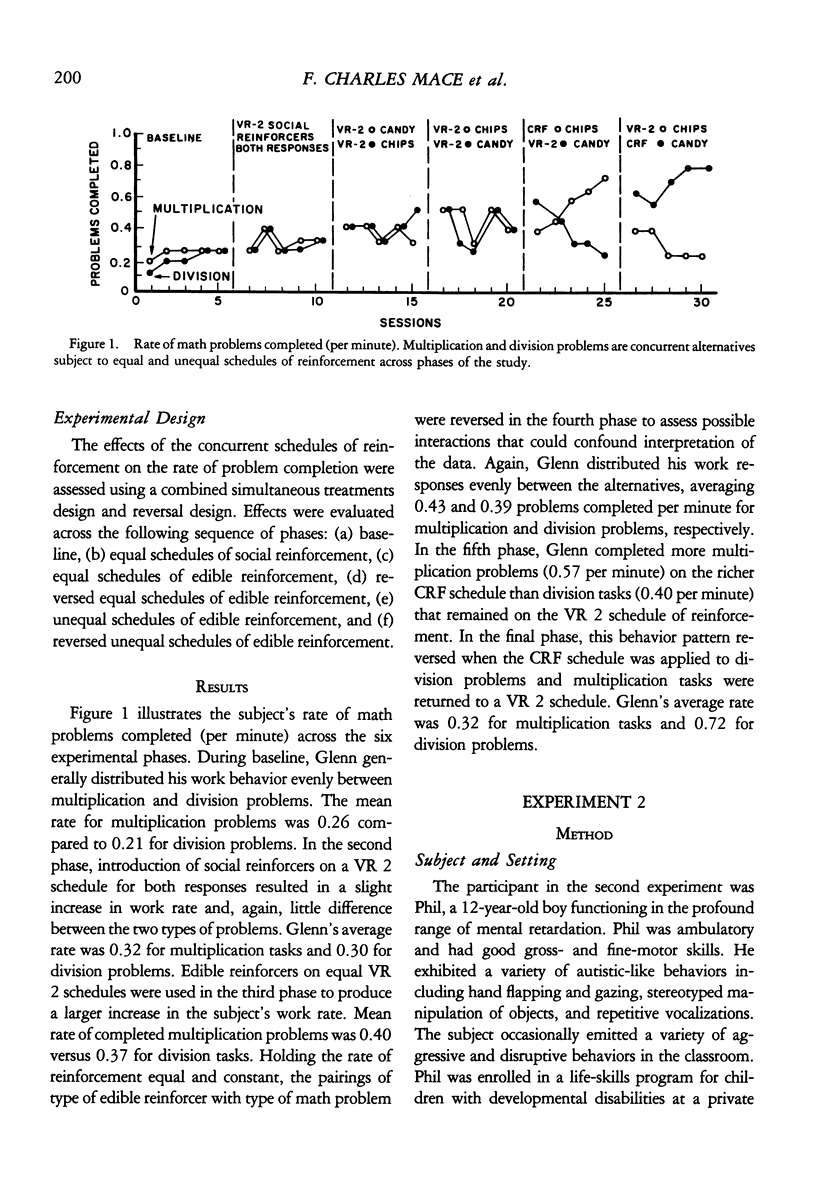Abstract
Matching theory describes a process by which organisms distribute their behavior between two or more concurrent schedules of reinforcement (Herrnstein, 1961). In an attempt to determine the generality of matching theory to applied settings, 2 students receiving special education were provided with academic response alternatives. Using a combined simultaneous treatments design and reversal design, unequal ratio schedules of reinforcement were varied across two academic responses. Findings indicated that both subjects allocated higher rates of responses to the richer schedule of reinforcement, although only one responded exclusively to the richer schedule. The present results lend support to a postulation that positive reinforcement may have undesirable collateral effects that are predicted by matching theory (Balsam & Bondy, 1983).
Full text
PDF








Selected References
These references are in PubMed. This may not be the complete list of references from this article.
- Balsam P. D., Bondy A. S. The negative side effects of reward. J Appl Behav Anal. 1983 Fall;16(3):283–296. doi: 10.1901/jaba.1983.16-283. [DOI] [PMC free article] [PubMed] [Google Scholar]
- Fuqua R. W. Comments on the applied relevance of the matching law. J Appl Behav Anal. 1984 Fall;17(3):381–386. doi: 10.1901/jaba.1984.17-381. [DOI] [PMC free article] [PubMed] [Google Scholar]
- Herrnstein R. J., Loveland D. H. Maximizing and matching on concurrent ratio schedules. J Exp Anal Behav. 1975 Jul;24(1):107–116. doi: 10.1901/jeab.1975.24-107. [DOI] [PMC free article] [PubMed] [Google Scholar]
- Herrnstein R. J. On the law of effect. J Exp Anal Behav. 1970 Mar;13(2):243–266. doi: 10.1901/jeab.1970.13-243. [DOI] [PMC free article] [PubMed] [Google Scholar]
- Myerson J., Hale S. Practical implications of the matching law. J Appl Behav Anal. 1984 Fall;17(3):367–380. doi: 10.1901/jaba.1984.17-367. [DOI] [PMC free article] [PubMed] [Google Scholar]
- Nevin J. A. Quantitative analysis. J Exp Anal Behav. 1984 Nov;42(3):421–434. doi: 10.1901/jeab.1984.42-421. [DOI] [PMC free article] [PubMed] [Google Scholar]
- Parrish J. M., Cataldo M. F., Kolko D. J., Neef N. A., Egel A. L. Experimental analysis of response covariation among compliant and inappropriate behaviors. J Appl Behav Anal. 1986 Fall;19(3):241–254. doi: 10.1901/jaba.1986.19-241. [DOI] [PMC free article] [PubMed] [Google Scholar]
- Russo D. C., Cataldo M. F., Cushing P. J. Compliance training and behavioral covariation in the treatment of multiple behavior problems. J Appl Behav Anal. 1981 Fall;14(3):209–222. doi: 10.1901/jaba.1981.14-209. [DOI] [PMC free article] [PubMed] [Google Scholar]


